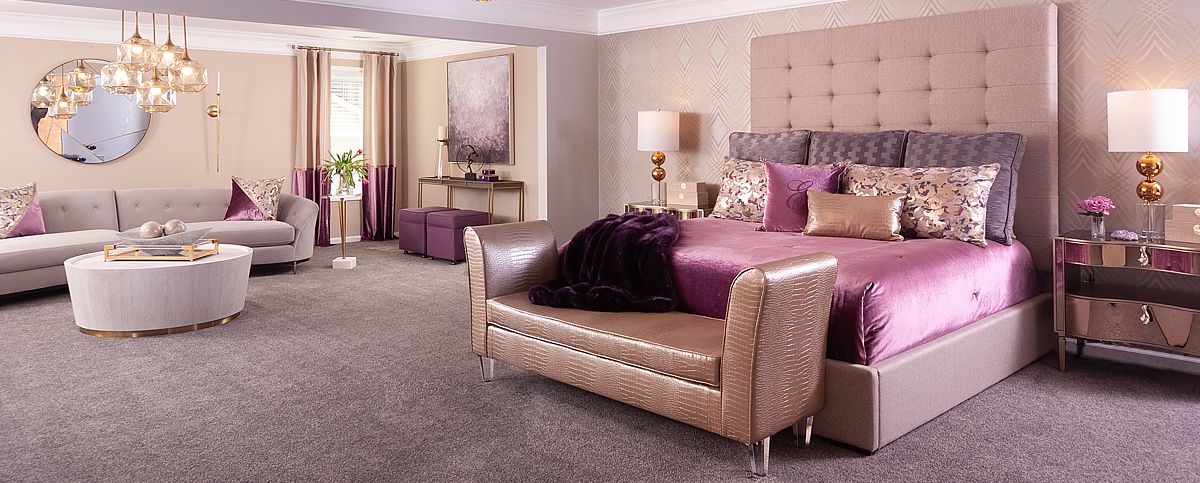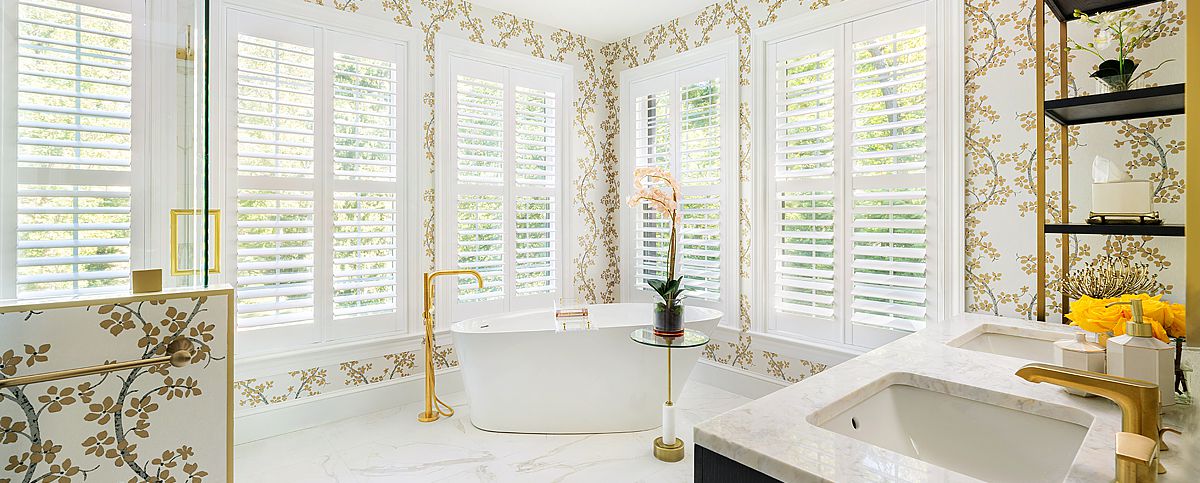Reading time 4 minutes
Creating Safe, Stylish, and Functional Homes
As we age, our homes play a crucial role in maintaining independence, comfort, and quality of life. Designing a space for aging in place—the ability to live safely and comfortably in one’s own home as long as possible—requires thoughtful planning, a focus on functionality, and a keen eye for aesthetics. Hiring a professional interior designer experienced in aging-in-place design can transform your home into a sanctuary that adapts to changing needs while retaining style and charm.
According to the AARP, nearly 90 percent of adults over 65 want to remain in their current homes as they grow older. Discover the value of aging in place and learn why so many older adults plan to remain in their communities as they age.

Understanding Aging in Place
Aging in place is about more than just mobility or accessibility; it’s about creating an environment that supports the physical, emotional, and social aspects of life as we grow older. My clients who are about to be empty-nesters or who may have health issues or sick parents need to be thinking about was to ensure their home continues to work for them as they complete updates in their home. This includes ensuring safety, enhancing functionality, and maintaining a sense of belonging and pride in the home.
While some modifications, such as grab bars and ramps, are often associated with medical facilities, a skilled designer can integrate these features seamlessly into your home’s aesthetic, avoiding a clinical appearance. A professional designer focuses on balancing safety and accessibility with beauty, ensuring the home feels inviting and personal.

Why Hire a Designer for Aging in Place
Designing a home for aging in place involves a unique set of challenges. From navigating building codes to sourcing appropriate materials and furnishings, an experienced designer simplifies the process, saving time and avoiding costly mistakes. Here’s how a professional can help:
Comprehensive Space Planning
Designing a home for aging in place requires a holistic approach to layout and functionality. Your designer evaluates the entire space, considering how to optimize room layouts to accommodate mobility aids such as walkers or wheelchairs. They ensure that pathways are wide enough, doorways are accessible, and frequently used areas like kitchens and bathrooms are easy to navigate.
Accessibility Without Compromising Style
One of the biggest advantages of having a designer’s backing is their ability to integrate accessibility features into the home without sacrificing style. For instance, a walk-in shower with grab bars can be designed with elegant tiles and fixtures, blending seamlessly into the overall aesthetic. Countertop heights, drawer pulls, and flooring materials can all be tailored to meet accessibility standards while maintaining a cohesive and beautiful design.
Focus on Safety
Safety is a critical aspect of aging-in-place design. A designer considers factors such as slip-resistant flooring, proper lighting, and the elimination of trip hazards. Stairs can be equipped with handrails, while ramps can be designed as architectural features that enhance the home’s exterior.

Customized Kitchens and Bathrooms
Kitchens and bathrooms are two of the most important areas in aging-in-place design. A designer can create custom solutions, such as lower countertops, pull-out shelving, touchless faucets, and curbless showers. These features improve ease of use and accessibility without detracting from the space’s overall design.
Future-Proofing the Home
A professional designer looks beyond immediate needs and incorporates features that will accommodate future changes in mobility or health. This includes installing blocking in walls for future grab bars, planning for a potential elevator, or designing flexible spaces that can be repurposed as needs evolve.
Vendor and Contractor Connections
Designers have established relationships with trusted vendors and contractors who understand aging-in-place principles. They can recommend the best products, from slip-resistant flooring to stylish grab bars, and coordinate installations, ensuring a smooth and efficient process.

Key Areas of Focus for Aging-in-Place Design
When hiring a designer to help with aging in place, several key areas of the home typically receive special attention:
Entryways
The entryway is the first point of accessibility. Designers can create ramps or level entrances that are both functional and visually appealing. They may also include features like motion-sensor lighting, keyless entry systems, and weather-resistant seating for added convenience.
Living Spaces
In living areas, designers focus on open layouts, wide pathways, and flexible furniture arrangements to ensure ease of movement. They might suggest lower shelving, reachable storage, and multi-functional furniture that accommodates changing needs.

Kitchens
A well-designed kitchen for aging in place includes features like pull-out cabinets, under-counter appliances, and counters at varying heights. Designers often incorporate easy-to-clean surfaces, bright task lighting, and strategically placed outlets to improve functionality.
Bathrooms
Bathrooms are a priority for aging-in-place design due to their potential safety risks. A designer can integrate curbless showers, non-slip flooring, and stylish grab bars into the design. Other features, such as raised toilet seats and wall-mounted sinks, can be added without compromising aesthetics.
Bedrooms
Bedrooms should promote relaxation and safety. A designer might recommend beds at an accessible height, ample bedside lighting, and convenient outlets for medical equipment or charging devices. Closet systems can also be customized for ease of access.

Lighting
Proper lighting is essential for reducing accidents and enhancing comfort. A designer ensures that spaces are well-lit with layered lighting, including ambient, task, and accent lighting. Motion-sensor lights in hallways or staircases provide added safety during nighttime hours.
Outdoor Spaces
Designers can also transform outdoor areas into accessible, enjoyable spaces. Features such as slip-resistant decking, ramps, and raised garden beds enable safe outdoor living while maintaining aesthetic appeal.

Benefits of Hiring a Professional
By hiring a professional designer for aging in place, homeowners can enjoy numerous benefits:
- Peace of Mind: Designers handle the complexities of the project, from planning to execution,
ensuring nothing is overlooked. - Cost Efficiency: Thoughtful design decisions can save money in the long run by avoiding costly
mistakes or future renovations. - Personalized Solutions: Designers tailor their work to your specific needs, preferences, and
lifestyle, creating a home that feels uniquely yours. - Improved Quality of Life: A well-designed home enhances daily living, making everyday tasks
easier and more enjoyable.
Finding the Right Designer
When hiring a designer for aging-in-place projects, look for professionals with experience in this specialized field. Ask for references, review their portfolio, and ensure they understand your specific needs and vision.
Designing a home for aging in place is about creating a space that evolves with you, providing safety, comfort, and style at every stage of life. A professional interior designer brings the expertise, creativity, and resources necessary to make this vision a reality. By addressing accessibility, functionality, and aesthetics, they can transform your home into a haven that supports your independence and enhances your quality of life for years to come.
If you’re ready to start your journey toward a thoughtfully designed home for ready for aging in place, consider reaching out to Holland Custom Designs and let a qualified specialist guide you every step of the way.
Contact Monique Holland or call (202) 617-4658
Join Our Newsletter
If you enjoyed reading this interior design blog, sign up for our monthly newsletter. They’re never too long and will brighten your day!










